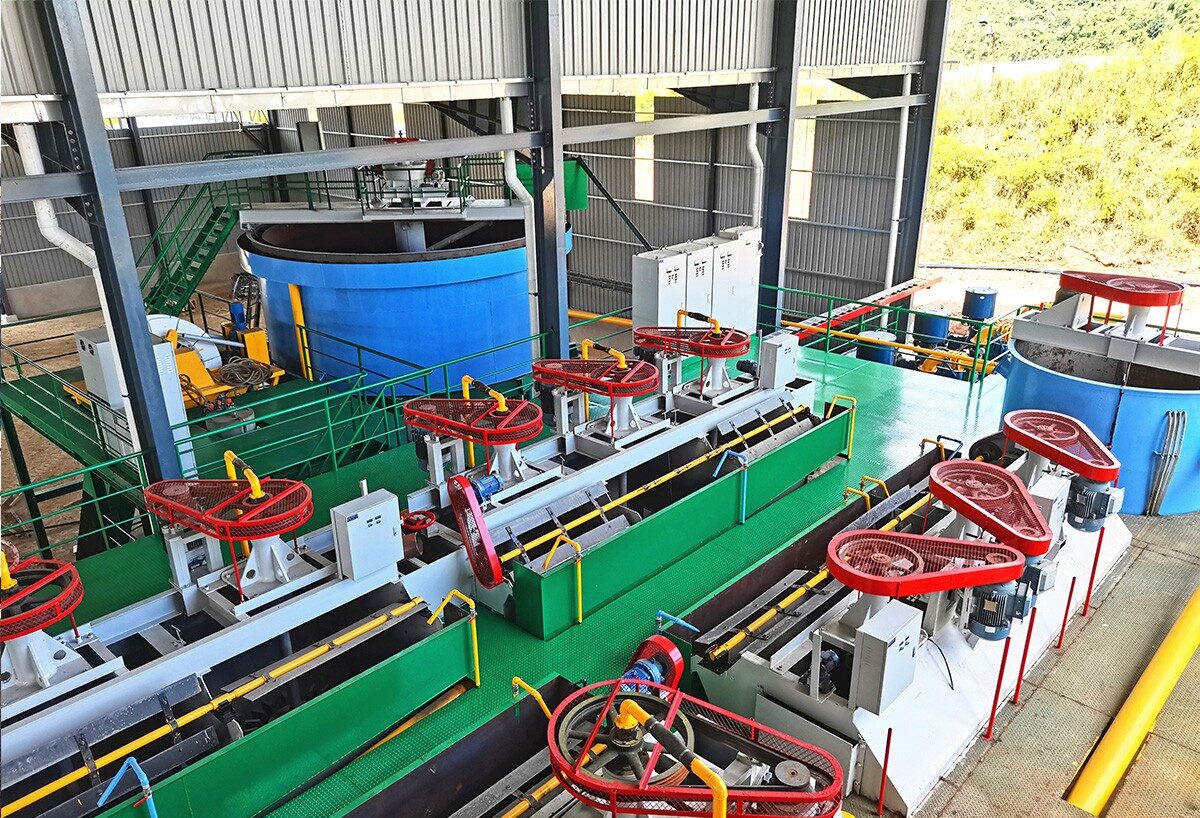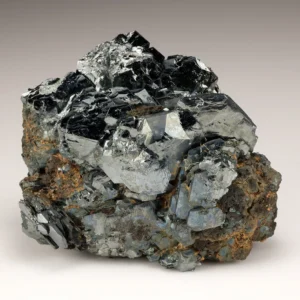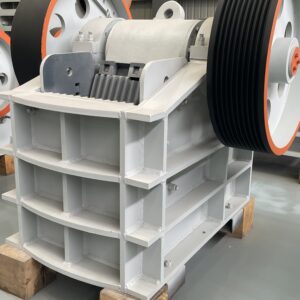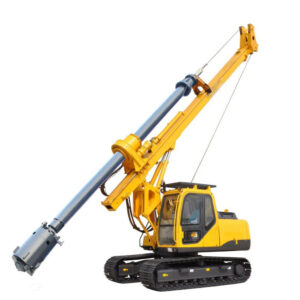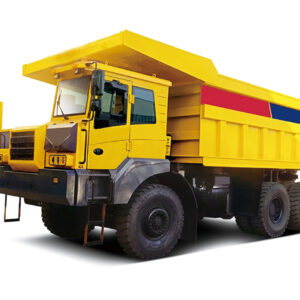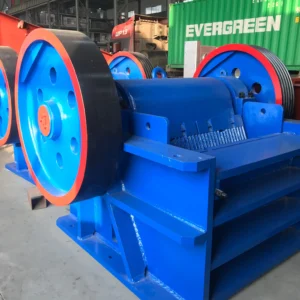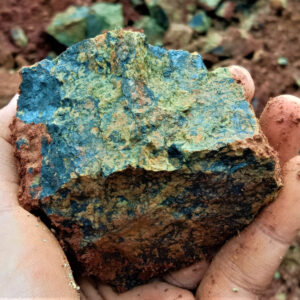Description
Copper Ore Flotation Production Line:
- Crushing and grinding: The raw ore is initially crushed by crushing equipment, and then finely crushed by grinding equipment to achieve a particle size suitable for flotation.
- Mixing and stirring: The ground ore is mixed with flotation agents, foaming agents, etc., and fully stirred in a stirring tank so that the flotation agent is fully in contact with the ore.
- Bubble blowing: The mixed and stirred ore slurry is passed through a flotation machine, and the air is blown into the foam so that the copper-containing minerals adhere to the foam, thereby separating them from other impurity minerals.
- Separation: The copper-containing minerals and impurity minerals in the foam are separated, usually by a scraper separation device in a flotation machine.
- Degassing: The separated copper-containing mineral foam is degassed to remove the moisture and flotation agent, and a dry copper concentrate is obtained.
Concentrate treatment: The copper concentrate is further processed, usually including leaching, smelting, and other steps, and finally pure copper metal is obtained.
What are the metal minerals?
The main metal minerals include chalcopyrite, the second is bornite, malachite, and a small amount of chalcocite. The main gangue mineral is dolomite and carbonation of dolomite, the second is quartz, calcite, and feldspar. Copper mineral is mainly paraded in dolomite and carbonation of dolomite. The block of copper carbide minerals is mainly in massive, spot, and scattered shapes. Oxidized ore is output in power and thin film. The particle size of chalcopyrite is 0.03-0.2mm.
What is the hardness of metal minerals?
The ore has medium hardness, whose density is 2.85t/m³. On the basic, copper process plant line is adopted in crushing, grinding, and flotation. In crushing, a stage open circuit is adopted, and the final crushing particle size, bigger than 18mm is less than 10%. Two-stage continuous grinding is adopted in the grinding part. In the first stage, the grinding concentrate is 75~80%, and the overflow concentrate is higher than 44%. In the flotation process, there are two rough selections and two scavenges. At the first stage of the rough copper recovery process, coarse and concentrated copper ore are produced.
Introduction
Copper Ore Flotation Production is a process designed to separate valuable copper minerals from the rest of the ore. This method involves crushing and grinding the ore, followed by flotation, where the copper minerals are separated and concentrated into a froth. Here’s a detailed breakdown of the process:
Applications:
- Copper Production: The primary application is the extraction of copper for use in electrical wiring, plumbing, and other industrial applications.
- Byproducts: The flotation process may also recover other valuable minerals, such as gold, silver, and molybdenum.
Advantages:
- High Recovery Rate: Efficiently recovers a high percentage of copper from the ore.
- Concentrate Quality: Produces high-grade copper concentrate suitable for smelting.
- Cost Efficiency: Reduces processing costs by concentrating copper at the mining site before transportation.
Considerations:
- Ore Quality: The grade and composition of the ore affect the efficiency of the flotation process.
- Reagent Use: The choice and amount of chemical reagents impact the effectiveness and cost of flotation.
- Environmental Impact: Managing tailings and ensuring compliance with environmental regulations is crucial.
